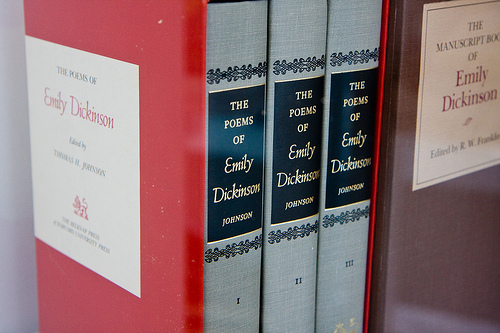Famous authors and their hobbies

Emily Dickinson: Collecting pressed flowers; gardening
When Emily Dickinson was 14 she began to amass an impressive collection of over 400 botanical specimens which she pressed, dried, carefully labeled. Called an "herbarium," this massive botanical scrapbook was a popular hobby among young girls at the time.
Later, Dickinson turned her passion to gardening and botany. She often "often included dried flowers in her correspondence," and successfully grew a huge variety of flowering plants.
Vladimir Nabokov: Butterflies
When Russian author Nabokov needed some time off from his work writing groundbreaking novels of modern literature, he hunted and collected butterflies. In fact, he developed a distinguished career as an entomologist, and was responsible for organizing the butterfly collection at Harvard University's Museum of Comparative Zoology.
Nabokov was a serious taxonomist who believed (along with many people at the time) that correct taxonomic identification of butterflies could be obtained not through genetic or chromosomal studies, but through examining their genitalia. His comprehensive collection of butterfly genitalia is still at Harvard University to this day.
Ayn Rand: Collecting stamps
The fact that I have trouble reconciling the idea of Ayn Rand as an avid stamp collector probably says more about me, and my preconceived notions about the kinds of people who collect stamps than it does about either Ayn Rand or stamp collecting. And yet, there it is: a simple fact. Ayn Rand collected stamps. I don't know what to make of it, frankly. Perhaps you will have better luck grappling with this one.
Rand found it refreshing to sort out her stamp collection after a hard day of writing. "A stamp album is a miraculous brain-restorer," she said, in an essay titled "Why I Like Stamp Collecting" which was published by the Minkus Stamp Journal in 1971.
Image courtesy Flickr/gsz

1 comments